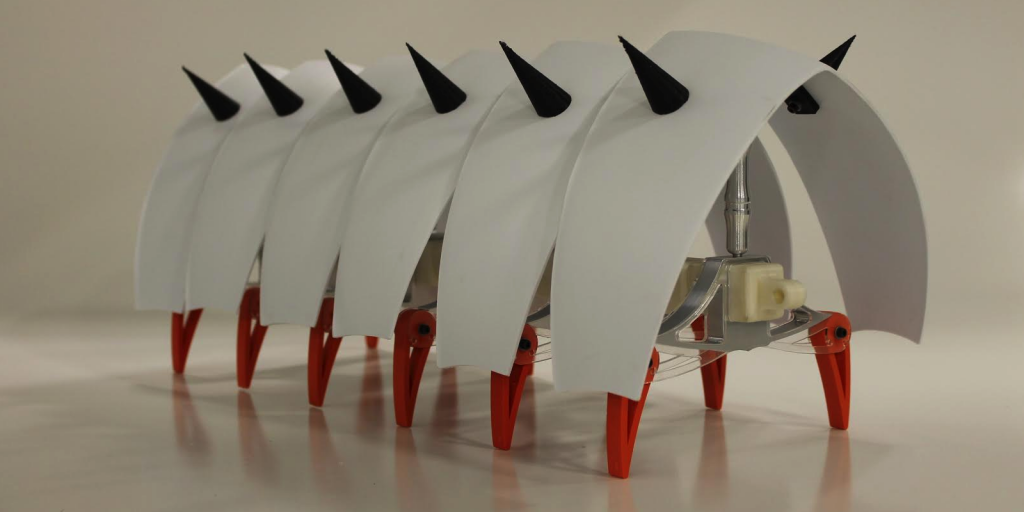
“The challenge and the point for the project was to have designers and engineers collaborate on one project for work experience with a different major that will be very critical in the real world,” one of the students on the project, Christopher Zimmitti, tells 3DPrint.com. “The basic layout for the project was to pick [an] insect and design what it will look like in Solidworks.”
As part of a class by Professor Simon Williamson, Zimmitti teamed with Industrial Design student Larkin Moneyhun and Mechanical Engineering Technology students Max Mahan and Tyler Nutting in order to recreate an insect most of us are probably quite familiar with, the ‘Roly Poly’ bug. The first step in the process was modeling the insect in Solidworks, before determining the method of production for all of the individual parts.
“We decided which parts would be made out of what materials and how we would make them whether it be CNC’d, 3D printed, etc.,” Zimmitti tells us. “Once we had the design down we just went to work as a group. The metal supports were all milled in the machines using Cam works files as well as the support for the shell which was the metal lade. We also had to create a mold for the casted feet, which i spent hours and hours perfecting to get the feet to be a solid and durable color.”
3D printing was used in order to create the insect’s spine as well as the spikes on its shell. The spine is two pieces which were designed to lock into each other in a similar fashion as to how the cars of a train are connected to one another.
“We also designed [the 3D printed pieces] to only bend into themselves because the whole point of the spine was to mimic what the ‘Rolly Polly’ bug does when it’s being defensive,” he explained.
As you can see in the images, the insect came out quite well. While there will be no mistaking this creation for a real insect, the intricacies in the design are something we should all appreciate. While there are no plans on behalf of the designers to take this design further, one has to wonder what adding some sort of robotic system to this creation could lead to.
Typically when we cover various 3D printed projects such as these, the designers resort to trying to use as many 3D printed parts as they can in the production process. However, the future of manufacturing and product design probably will be closer to the method used by these students — a method which combines several manufacturing means into one project, utilizing many intelligent minds from different fields of study.
What do you think about this clever creation? Would you like to see this man-made Roly Poly bug turned into a robot? Discuss in the 3D Printed Roly Poly Bug forum thread on 3DPB.com.